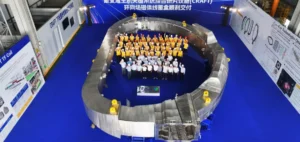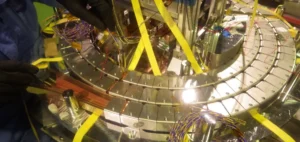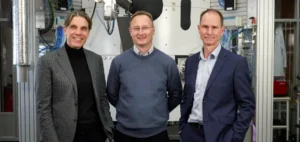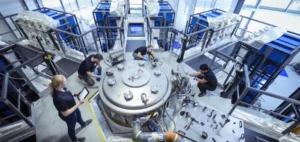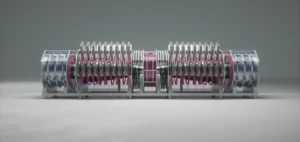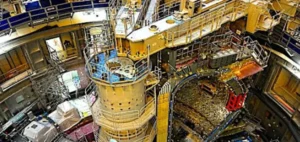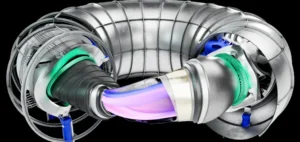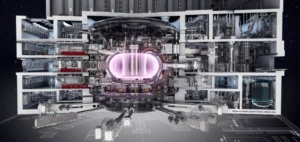The site of the former Biblis nuclear power plant has been selected to host a nuclear fusion facility based on laser technology. A memorandum of understanding has been signed by the Hesse government, specialised companies, and research institutions to implement this project. The objective is to establish a pilot facility before commissioning a commercial energy production unit.
A site repurposed for fusion
The former Biblis power plant, shut down in 2011, offers suitable infrastructure for the development of an industrial fusion project. The construction of a demonstration unit will assess the feasibility of this technology before considering commercial operation.
The project is based on a laser fusion approach, using a focused proton beam to trigger fusion reactions in deuterium-tritium fuel targets. This technology builds on advancements in high-energy lasers and benefits from the expertise of multiple research institutes.
Investments and financing
The Hesse government has announced funding of up to €20 million this year to support nuclear fusion research. Additional financing is expected from private capital and grant programs at the federal and European levels.
The strategic direction of these investments aims to enhance the competitiveness of the energy sector by diversifying production sources. Germany is working to establish an industrial sector capable of exploiting fusion within a viable economic framework.
Technological development and applications
The project involves industrial and academic stakeholders engaged in fusion research. The Hesse region has a scientific ecosystem that supports innovation in this field, with specialised infrastructure and technical expertise suited to sector requirements.
The establishment of this facility aligns with a long-term technological development strategy. The objective is to assess the performance of laser fusion and explore its integration into the energy mix.
Outlook and regulatory framework
Federal authorities have announced a funding programme to support fusion research and establish Germany’s first commercial fusion power plant by 2040. The integration of fusion into the German regulatory framework will require adjustments to facilitate its industrial deployment.
The installation of a fusion facility in Biblis represents a step in the transformation of energy infrastructure. The project could serve as a reference for the development of this technology in Germany and Europe.



